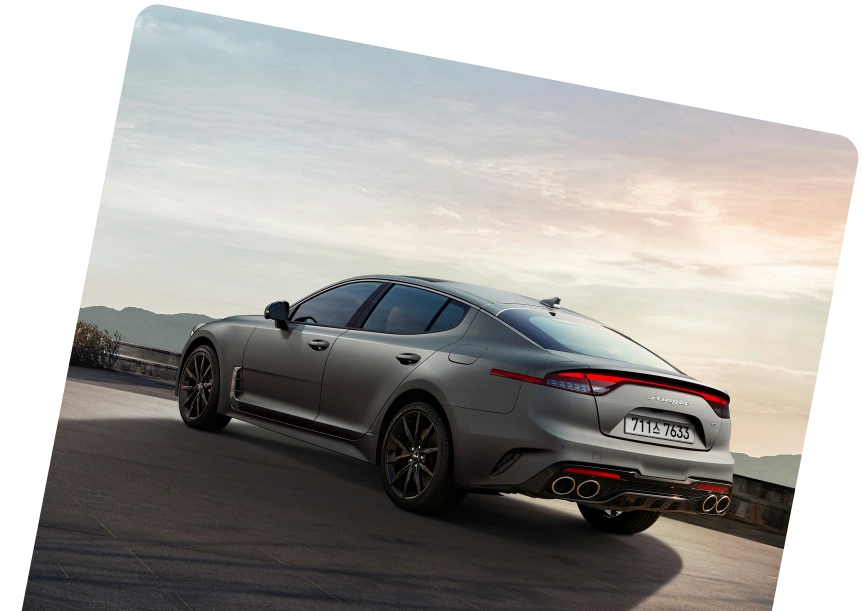
The Ford Fiesta and Vauxhall Corsa have both been mainstays of the UK supermini market for decades.
With the Corsa now outselling what was once the UK’s best-selling car, the Fiesta, many people are starting to wonder what changed. This does not mean the Fiesta has lost its appeal. There are still plenty of used Fiestas and Corsas on the market, so you can always find a good option, but which one is the better buy?
Here is a head-to-head look at these two superminis to help you decide.
Quick Overview
Let’s compare the Fiesta and Corsa across their main features:
| Ford Fiesta | Vauxhall Corsa |
Dimensions | 4,040 × 1,735 × 1,476 mm | 4,060 × 1,765 × 1,433 mm |
Horsepower | 74-197hp (1.0L-1.5L turbo/petrol & ST) | 75-134hp (1.2L-1.2L Turbo petrol, hybrid) |
0-60 mph | 6.5-11.6 sec | 8.6-12 sec (Corsa-e fastest around town) |
Seats | 5 | 5 |
Fuel options | Petrol, mild-hybrid | Petrol, diesel, hybrid, electric |
Gearbox options | Manual, automatic | Manual, automatic |
Boot space | 311L | 309L (Corsa-e: 267L) |
Safety rating | 5-star Euro NCAP | 4-star Euro NCAP |
Notable trims | ST, Titanium X, Vignale | Energy, Design, Limited Edition, SE |
Price Comparison
Before it was discontinued in 2023, the Ford Fiesta had a new price of £18,395, and 2018 models with around 50,000 miles now start from about £5,500 on the used market.
The Vauxhall Corsa tends to be slightly cheaper when new at £17,995, with similar mid-mileage examples now available from roughly £4,200. If you’re looking at electric options, thenew Corsa-e ranges from £26,000 to £28,000. On the used market, early Corsa-e models can be found from around £9,000 to £10,000.
Overall, budget-conscious drivers will enjoy both the used Ford Fiesta and used Vauxhall Corsa models.
Engine Options
At the lower end, the Fiesta’s 1.1-litre petrol delivers either 69bhp or 84bhp, which works for city streets and short commutes. The 1.0-litre three-cylinder EcoBoost engine provides 99bhp, 123bhp, or 138bhp. Diesel drivers have the 1.5-litre unit, available with 84bhp or 118bhp. Later models add mild-hybrid technology with the 1.0 EcoBoost 125 and 155 versions, which combine extra power with good efficiency.
The Vauxhall Corsa has fewer engine options but still performs well. Its base petrol, the 1.2 Turbo Petrol 100PS, handles motorway journeys comfortably. The Corsa also offers two hybrid variants that pair a 1.2-litre petrol engine with an electric motor and a six-speed automatic. The 109bhp version delivers responsive performance, and the 143bhp model adds extra acceleration for more spirited drives.
Performance
Fiesta’s steering offers clear feedback on the front wheels’ position, which makes it a rewarding car to drive. The suspension balances comfort with control and keeps the five-door model steady through corners. The gearbox and pedals respond precisely, making manoeuvres and overtakes straightforward and satisfying. Thesporty three-door version feels even more agile on tighter roads.
The Corsa’s steering feels light and relaxed near the centre, so casual drives remain easy, though it offers less confidence through corners than the Fiesta. The automatic gearbox shifts gears reliably, and the chassis handles bumps well, which provides a comfortable ride overall.
Interior
The Fiesta cabin feels compact yet thoughtful. Drivers can adjust the steering wheel and seats across a wide range to find a comfortable position. The dashboard keeps buttons and controls within easy reach, and thematerial quality feels solid, with soft-touch surfaces across key areas.
The front seats hold passengers securely on longer journeys. Rear passengers have reasonable headroom, though taller adults may find legroom tight on longer trips.
The Corsa is a better car in terms of cabin spaciousness, with a dashboard that makes the interior feel more open and comfortable. A wide silver or coloured trim strip stretches across the front, which brightens the interior. The materials feel modern, with chrome and gloss black surfaces, although some plastics around the controls feel cheap.
The front seats sit slightly higher than the Fiesta’s, which may limit adjustment for very tall drivers. Rear passengers have slightly more legroom than in the Fiesta, but upright seatbacks reduce comfort on long journeys.
Boot Space
The Fiesta’s boot measures 311 litres, enough for a weekly shop or a couple of medium-sized suitcases. The loading lip sits at a convenient height, which makes lifting heavier items easier.The rear seats fold in a 60/40 split to accommodate longer or bulkier objects.
The Corsa offers 309 litres of boot space, just a touch smaller than the Fiesta. Its low loading lip makes it easier to slide in luggage, and the 60/40 split-fold rear seats provide extra room for larger items. The overall layout is simple and practical.
Technology
Newer Fiestas include a touchscreen infotainment system with Apple CarPlay and Android Auto, so it’s easy to connect a smartphone for music, calls, or navigation. Bluetooth and air-conditioning come as standard, and higher trims add sat-nav, a B&O sound system, and heated front seats.
The controls sit intuitively around the driver, and the display is clear and easy to read at a glance.
The Corsa offers a more visually striking interior with a 7.0-inch IntelliLink touchscreen featured on mid-range and upper trims. Apple CarPlay and Android Auto come as standard, and navigation appears on certain models. Lower trims provide Bluetooth and a DAB radio, and higher trims include xenon headlights, cruise control, and premium sound systems for those who want a little more flair.
The touchscreen responds accurately, and the layout of buttons and switches sits naturally around the driver.
Reliability
Ford’s Fiesta has a strong reputation for reliability. Petrol models rarely report major faults, which gives owners confidence in everyday use. The 1.0-litre EcoBoost engines and later mild-hybrid versions perform consistently over time. Even the simpler1.1-litre petrol units remain robust and easy to repair. Parts are widely available and reasonably priced.
The Corsa offers dependable performance across petrol, diesel, and electric versions. Petrol engines, particularly the 1.2-litre unit, retain good reliability over several years. Diesel models hold up well under higher mileage, and the Corsa-e electric variant reduces mechanical concerns, though battery care requires attention. Surveys show slightly more reported faults than the Fiesta, but careful servicing keeps problems inVauxhall cars to a minimum.
Safety and Driver Assistance
The Fiesta offers a full set of safety features. Front, side, and curtain airbags protect all passengers, and electronic stability control helps the car stay steady on slippery roads. Higher-spec models include rearparking sensors, which make manoeuvring easier. Lane-keeping alerts and speed assistance appear on top trims.
The Fiesta holds a five-star Euro NCAP rating, with strong crash protection and reliable safety systems.
Inside the Corsa, front, side, and curtain airbags cover all occupants, while the electronic stability programme helps maintain control. Most trims come with parking sensors and a rear camera to assist in tight spaces. Higher trims add lane departure warnings and automatic emergency braking.
The hatchback achieved four stars in Euro NCAP testing, with a slightly higher risk of whiplash for rear passengers.
Running Costs and Ownership
Both the Vauxhall Corsa and Ford Fiesta have low running costs, but they are not identical. Here, we take a look at their fuel economy, insurance, and what ownership is really like.
Fuel and Energy Efficiency
The Fiesta models return around 53mpg on the entry-level 99bhp petrol. The mild-hybrid 123 and 153bhp versions provide extra performance without a noticeable drop in efficiency. The smallest 1.1-litre petrol achieves over 53mpg and comes with lower insurance costs.
The Vauxhall Corsa’s petrol engines perform in a similar range. Its 74bhp and 99bhp units deliver figures close to the Fiesta, and the 1.2-litre 128bhp automatic offers slightly quicker acceleration without affecting fuel use. For longer-distance journeys, the 1.5-litrediesel engine can achieve excellent fuel economy of up to 70mpg.
Insurance
Insurance groups for standard Fiesta and Corsa models are low, which keeps annual premiums reasonable.
Insurance costs for the standard Fiesta fall into groups 3 to 30, with an average yearly premium of around £713. The exact figure depends on your model and location. The Corsa sits in groups 2 to 34 and averages about £685 per year, again influenced by trim and postcode.
Servicing
Ford provides competitive servicing prices, including Essentials plans from £169 for cars outside warranty. Vauxhall’s package offers fixed-price services at £160 for an interim, £265 for a main, and £305 for a major.
Tax
Road tax is similar for the petrol versions, with the Fiesta slightly lower at around £165 per year and the Corsa around £200, depending on engine choice.
Depreciation
Depreciation follows the typical pattern for small hatchbacks. They lose a significant portion of their value in the first few years, then settle into a steadier decline as they age. The rate of fall slows after around three to four years.
How Carplus Helps You Finance the Car You Want
Buying a used car can feel like a big commitment, but Carplus makes the process clear and manageable. We provide a variety of car financing options with flexible terms and fair rates so you can choose the Fiesta or Corsa that fits your budget. Carplus explains monthly repayments, interest rates, and any extra fees so you know exactly what to expect.
With our support, you’ll be able to finance your next car through a transparent, affordable process. Compare different plans today!
Who Is the Ford Fiesta for?
The Ford Fiesta is a good choice for drivers who enjoy a more fun-to-drive experience. It works well on country roads, in town, and on the motorway. It suits those who want a range of engine options, including the high-performance Ford Fiesta ST model, and a cabin with basic tech and comfort.
Who Is the Vauxhall Corsa for?
The Vauxhall Corsa works well for people who want a practical and reliable small car. It handles town and city driving, daily commutes, and longer trips comfortably. Withpetrol, diesel, and electric options and a well-equipped interior and technology, it meets the needs of those who value practicality and simple, convenient transport.
Verdict
Whether you end up choosing the Ford Fiesta or Vauxhall Corsa, they both offer great value for money, especially on the used market. If you want a small car that covers most bases well, either one works. These two cars are some of the most popular choices in the UK, and that’s not without reason.
The Vauxhall Corsa has the advantage of ongoing production, but when it comes to performance and premium trims, the Ford Fiesta takes the lead. Even in standard models, itsdriving experience, refinement, and range of options explain why it has remained so popular for decades.
All the best on the road!
Table of Contents








